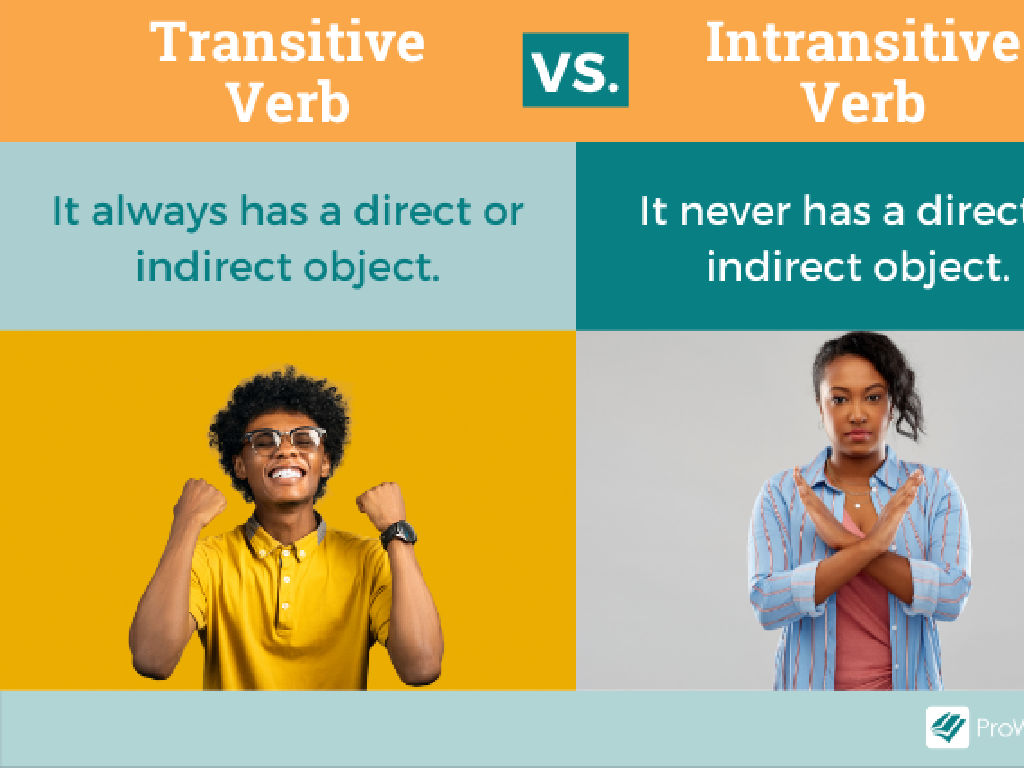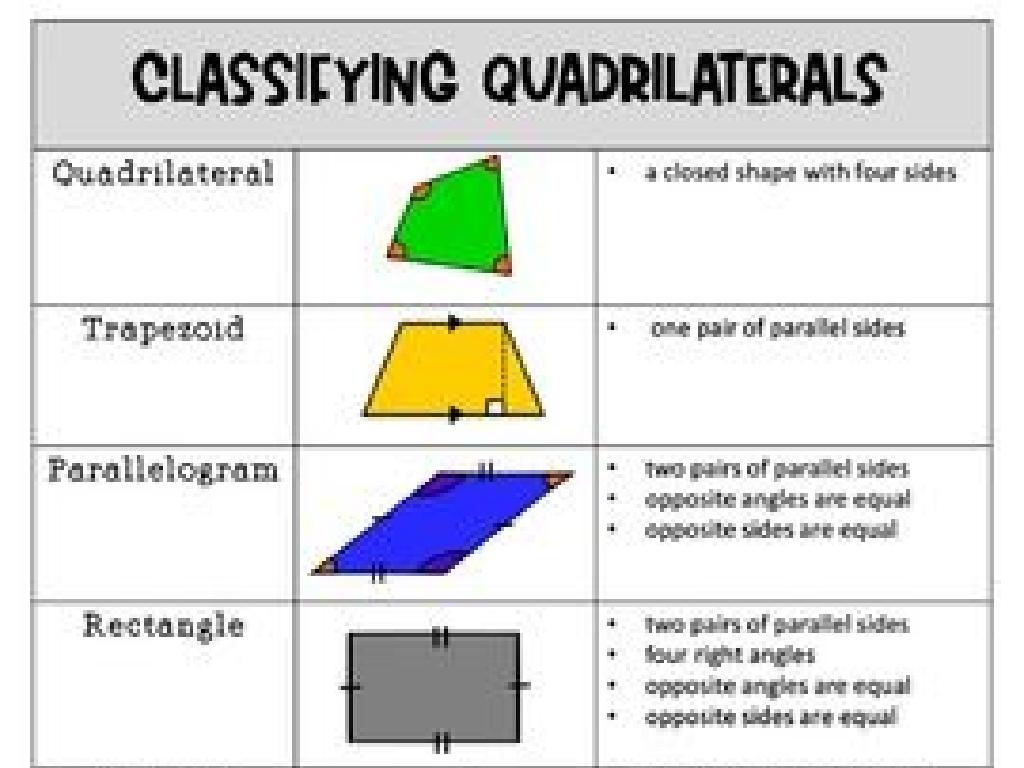Add And Subtract Whole Numbers Up To Billions
Subject: Math
Grade: Fifth grade
Topic: Addition And Subtraction
Please LOG IN to download the presentation. Access is available to registered users only.
View More Content
Introduction to Large Numbers
– Grasp whole numbers up to billions
– Numbers as big as 9,000,000,000
– Daily life uses of addition & subtraction
– Use in budgeting, distance, population
– Review basic addition & subtraction
– Add and subtract numbers without regrouping
– Practice with large number operations
– Solve problems with very big numbers
|
This slide introduces students to the concept of very large whole numbers, reaching up to the billions, and emphasizes the practical applications of addition and subtraction in everyday life. It’s crucial to ensure that students are comfortable with basic addition and subtraction before moving on to larger numbers. Use examples like managing a budget, measuring long distances, or understanding population figures to illustrate the importance of these operations. A quick review of basic addition and subtraction without regrouping will help to refresh their memory. Encourage students to practice with large numbers to build confidence and proficiency in handling real-world mathematical problems.
Place Value Review: Building Blocks of Numbers
– Recap place values up to billions
– Understand ones, tens, hundreds, thousands, millions, and billions.
– Identify digit values in big numbers
– Each digit has a value based on its position.
– Build numbers with place value
– Create large numbers by combining place values.
– Break down numbers into place values
– Decompose numbers to understand each digit’s value.
|
Begin with a review of place value concepts, ensuring students recall the significance of each position in a number, from ones to billions. Use visual aids like place value charts to help students identify the value of digits in large numbers. Engage students in activities where they build and deconstruct numbers using place value to reinforce their understanding. For example, ask them to represent a number in expanded form or to determine the value of a digit in a given position. This foundational knowledge is crucial for performing addition and subtraction with large numbers, as it helps students align digits correctly and understand the magnitude of the numbers they are working with.
Adding Large Numbers
– Steps for adding big numbers
– Line up the digits, then add each column starting from the right
– Understand carrying over
– If a column adds up to 10+, carry over to the next left column
– Example: 2 billion + 3 billion
– 2,000,000,000 + 3,000,000,000 = 5,000,000,000
|
This slide introduces students to the concept of adding large whole numbers, specifically up to the billions. Start by explaining the importance of aligning the numbers by their place values. Emphasize the process of carrying over when the sum of a column is 10 or more, which is a crucial step in adding large numbers. Use the example provided to show a clear visual representation of this process. Encourage students to practice with additional examples and ensure they understand that the same principles apply regardless of the size of the numbers.
Subtracting Large Numbers
– Steps for subtraction up to billions
– Line up the numbers by place value and subtract one by one.
– Borrowing from higher places
– If a column can’t be subtracted, borrow from the next left column.
– Example: 5 billion – 1 billion
– Subtracting 1,000,000,000 from 5,000,000,000 gives us 4,000,000,000.
|
This slide is aimed at teaching students the process of subtracting large numbers, specifically up to the billions. Start by explaining the importance of aligning numbers by their place values, which makes it easier to subtract each column. Emphasize the concept of borrowing, where if a column doesn’t have enough to subtract from, we borrow from the next higher place value. Use the example of subtracting 1 billion from 5 billion to illustrate a simple subtraction without borrowing. This will help students understand the basic concept before moving on to more complex examples where borrowing is necessary. Encourage students to practice with different numbers to become comfortable with the process.
Addition and Subtraction Practice
– Solve addition problems as a class
– Work through subtraction problems
– Learn to check our work
– Use strategies like reverse operations to verify answers
– Understand and learn from mistakes
– Discuss common errors and how to avoid them
|
This slide is focused on interactive class activities to practice adding and subtracting large numbers. Start by solving a few addition problems together, ensuring to align the digits correctly and add one column at a time. Then, move on to subtraction problems, reminding students to borrow from the next column when necessary. Emphasize the importance of checking work by using the inverse operation; for example, adding the difference to the subtrahend to see if it matches the minuend. Finally, discuss common mistakes such as misalignment of digits or incorrect borrowing, and how to correct them. Encourage students to approach mistakes as learning opportunities. Provide several examples for each type of problem and ensure that students are comfortable with the process before assigning individual work.
Real-World Application of Addition and Subtraction
– Understanding budgeting
– Add expenses to find total costs, subtract to balance budget.
– Tracking population changes
– Add births, subtract deaths for population count.
– Measuring planetary distances
– Add or subtract to find the difference between planets.
– Applying math to daily life
|
This slide aims to show students how addition and subtraction are used in everyday life. Budgeting involves adding up all expenses to find out the total cost and subtracting it from income to balance a budget. Population count is tracked by adding the number of births and subtracting the number of deaths. Understanding distances between planets requires adding or subtracting the space between them. Encourage students to think of other examples where they use addition and subtraction in their daily lives, such as in sports scores or cooking. This will help them see the value of math beyond the classroom.
Class Activity: Billionaire’s Budget
– Form groups for budget activity
– Add & subtract billions in budget
– Use real-life figures for practice
– Balance your group’s budget
– Ensure income equals expenses
– Present budget to the class
|
This activity is designed to give students practical experience with adding and subtracting large numbers by working on a fictional ‘Billionaire’s Budget’. Divide the class into small groups and provide each with a budget template that includes various income sources and expenses in the billions. Students will practice adding the income and then subtracting the expenses to balance their budget. Encourage them to think critically about which numbers to add or subtract and to check their work for accuracy. After completing the activity, each group will present their balanced budget to the class, explaining their process and any challenges they faced. This will help students understand the real-world application of math in financial literacy. Possible variations for different groups could include varying the sources of income and expenses, or introducing unexpected financial events that require budget adjustments.
Wrapping Up: Adding & Subtracting Big Numbers
– Review of adding & subtracting billions
– Homework: Practice with large numbers
– Complete the worksheet on adding and subtracting numbers in the billions.
– Observe big numbers around you
– Look for large numbers in places like TV, billboards, or even grocery stores.
– Share your findings tomorrow
– Be prepared to discuss how you use large numbers in daily life.
|
As we conclude today’s lesson, remind students of the key steps in adding and subtracting numbers up to billions. For homework, they should complete the provided worksheet to reinforce their skills. Additionally, encourage them to be observant of their surroundings and identify real-world examples of large numbers, which will help them understand the practical applications of what they’ve learned. This activity will also stimulate their curiosity and connection to the material. In the next class, we’ll discuss their observations and how large numbers play a role in various aspects of life.






